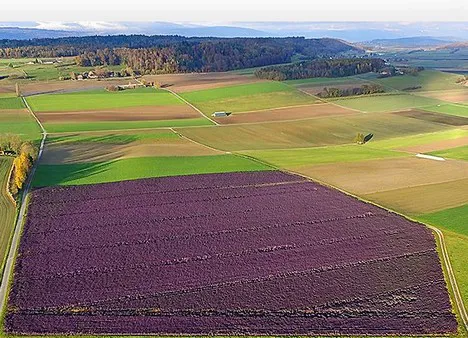In 2010, British seed company Tozer Seeds launched a new vegetable called the 'Flower Sprout'. This mix of Brussels sprouts and feathered sprouts was convincing: four years later the first Flower Sprouts were grown in Switzerland. Since 2017, the vegetables have been sold under the Kalettes brand name, "so that they have the same name all over the world," says Proveg AG. Kalettes grow on 10 hectares in Switzerland; just one Bernese and one Freiburg producer is growing these vegetables.
These growers are the only two Swiss producers who have gotten a licence from Tozer Seeds to cultivate this vegetable. Because they have spent 15 years tinkering with mixed cultivation, they now want a share of the profits. The Proveg company markets the plants, which means that they pack and deliver the kalettes, plan the volumes and take care of the marketing.

Kalette cultivation in Switzerland / Picture: Kalettes
Four tonnes for the whole of Switzerland
In April, the seedlings are placed in the fields. When the days get shorter and the temperatures drop, the kalettes are harvested. The harvesting season lasts from November to March, when about 4 tons are harvested throughout Switzerland. This is done mechanically: the vegetables are to be cut on frost-free days. Then, another machine separates the florets from the plant. The perfect florets are then sorted out by hand, on a sorting machine.
This summer, hail damaged a field and for this plot general growth was stunted. At the same time, this season there were two plots where some of the plants were affected by wind. These can no longer be harvested - or only partially.
Source: Schweizer BauerFor more information: www.proveg.ch/
